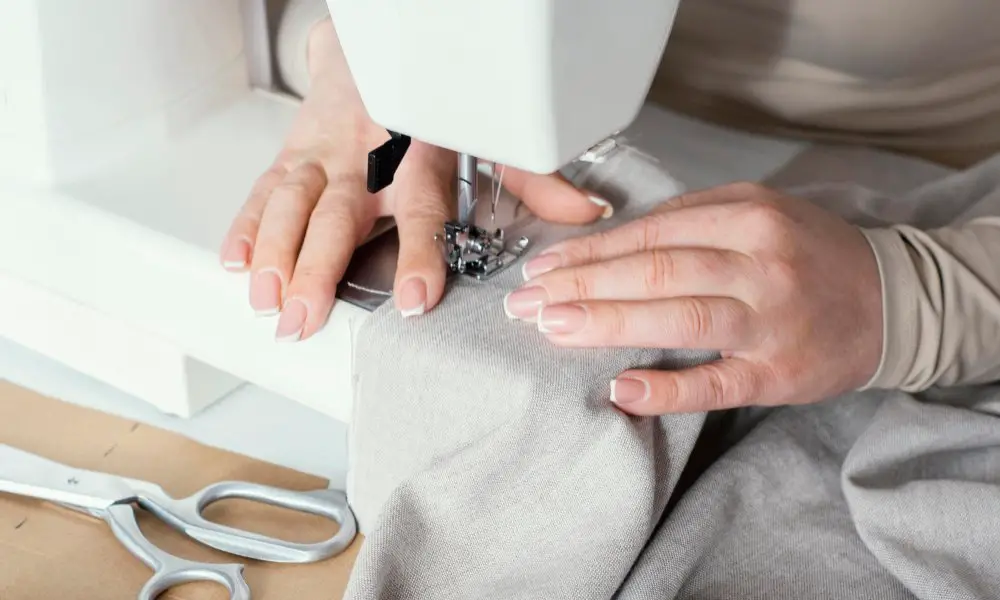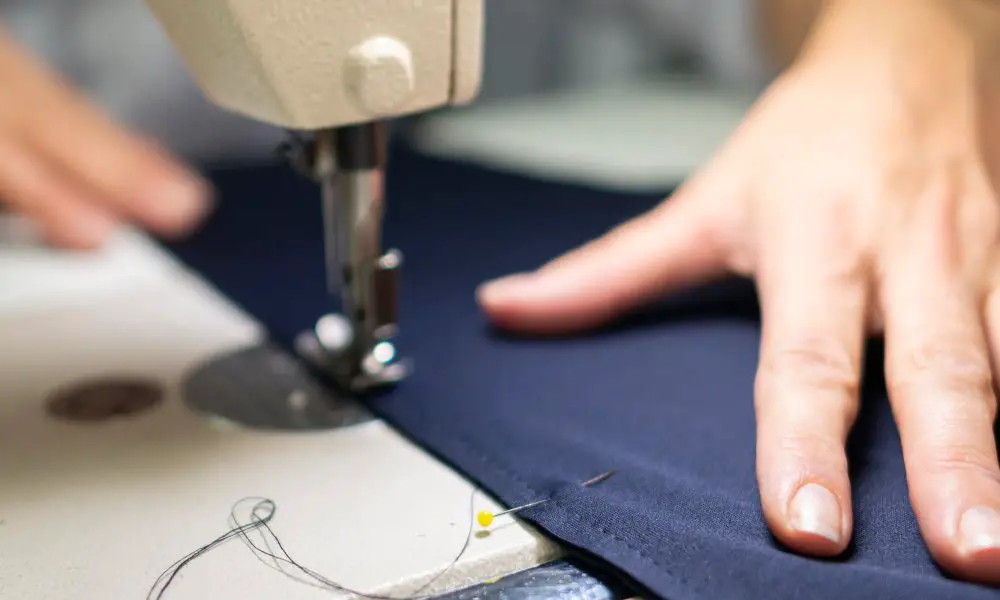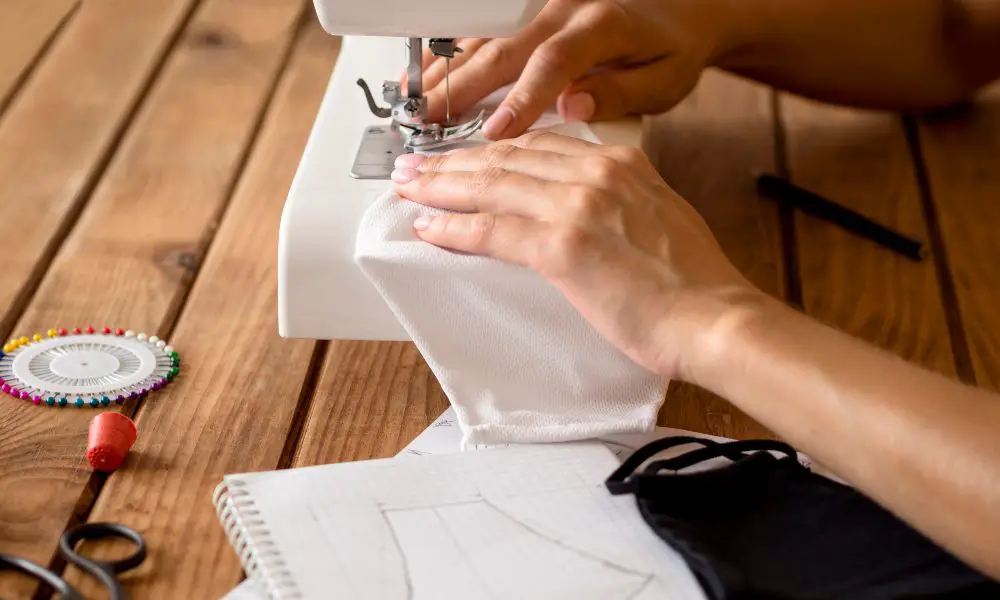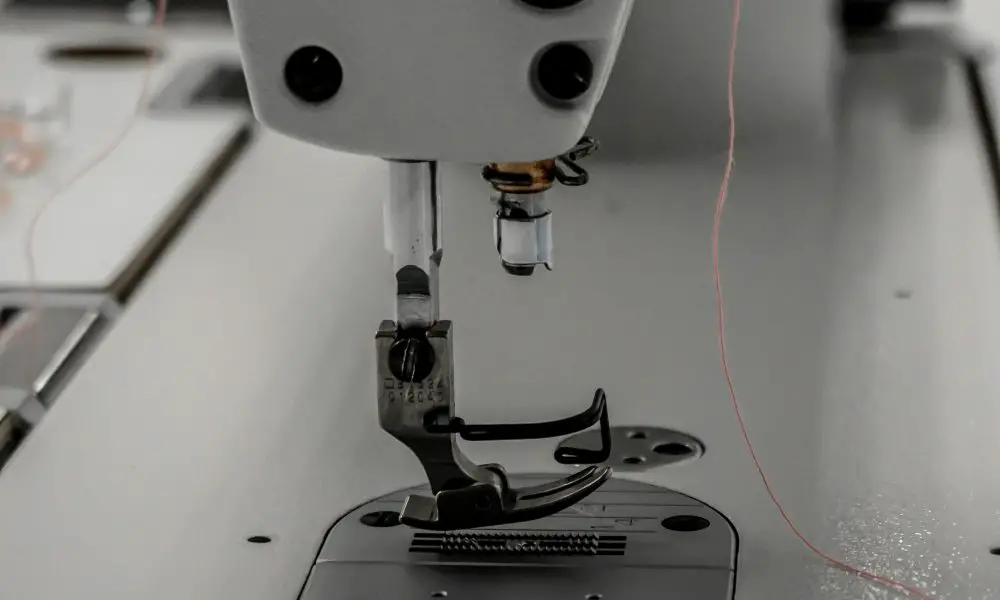Perfectly hemmed trousers can elevate any outfit from casual to impeccably polished. Ditch the tailor and use a simple sewing machine to finesse your ideal pant length.
How to Hem Trousers with a Sewing Machine:
- Measure and mark the desired length
- Prepare hem allowance and press crease
- Pin and baste new hem in place
- Stitch along pressed crease line
- Trim excess fabric and press the hem
Ready to achieve that crisp, professional look? Let’s begin!
Measuring for the Perfect Fit
Proper measuring upfront is crucial for hemming success. Enlist a friend to help you mark while wearing the trousers. Have them use a fabric pencil or chalk to mark your desired length from the waistband straight down each pant leg.
Take the pants off and double-check those markings, making any adjustments before moving forward. A few extra minutes of precision now will save you lots of unpicking later!
Determining Hem Allowance
Most dress pant hems use a 1-1.5 inch allowance of excess fabric to create a crisply folded hem. Jeans and heavy materials may require a deeper 2″ allowance. Examine the original hem depth and stitch positioning to help decide your allowance.
For example, if the existing hem shows a ⅝” seam allowance turned under twice, plan for a 1.25″ overall hem allowance. This allows enough fabric to recreate that double-fold hem finish cleanly.
Preparing the New Hem

Once you’ve settled on a final marking for length and allowance, it’s time to set that crease. Turn the trousers inside out and fold the raw edge to meet your markings, pressing firmly with a hot iron. Use sewing pins or safety clips to keep the fold crisp and even.
Now for some optional basting: sewing a long temporary stitch with contrasting thread along your pressed crease. This lets you try on the pants one last time and tweak the length if needed before making it permanent.
Stitching the Final Hem
When you’re confident about the fit, it’s time to lock that hem in place. Stitch directly along your basted crease line using a short, sturdy, straight stitch or specialized hem stitch on your machine. The blind hem stitch works beautifully, creating a nearly invisible line of stitching on the right side.
On dressier trousers, switch to a hand-worked slip stitch instead. This gives more flexibility than machine stitching for a flawlessly smooth finish.
Be sure to remove any basting stitches afterward using a seam ripper or sharp nail scissors. Reinforced heavyweight threads can leave bulky seams – avoid these when hemming for a crisp, polished look.
Finishing Touches
After stitching, carefully trim any excess fabric hanging below the new hemline, leaving just a 1/4″ – 1/2″ allowance. Some sewers prefer to catch this trimmed edge in a line of zig-zag stitching for extra security against future unraveling.
Finally, give that newly hemmed edge one last crisp press, taking care not to scorch or shine the fabric. And voila – a professional trouser hem worthy of the finest ateliers! Slip them on and strut confidently in your dialed-in look.
Elevating Your Hemming Skills
Mastering this machine hemming method opens up endless possibilities for altering trousers, jeans and more to achieve the perfect customized fit. No need for costly tailoring when you’ve got these skills!
For extra polish, splurge on a specialized blind hem foot to simplify those nearly invisible stitches. A ham or cylindrical press can also create beautifully shaped hems on curved legs.
When hemming delicates or unlined pants, use tissue paper or fabric strips to stabilize the fragile raw edge. Wide flat-felled and double-turned hems are additional specialized techniques for heavier weights.
The humble trouser hem may seem simple, but there are many tricks for achieving impeccable results every time. Why not try a new style or fabric on your next hemming project?
FAQs
Do I need to use a particular thread for hemming?
All-purpose polyester thread works excellent for machine hemming. Choose a color to blend with your fabric. Silk, cotton, or quality polyester-covered cotton threads can also work well.
My hem is buckling or bunching strangely. What’s the issue?
Make sure your stitch length is not too long and tight. Check that you’re not accidentally catching the pant leg fabric above the hem on the underside. Pressing firmly can help.
How can I get a crisp edge when turning my hem?
Use a slender tool like a hem scorer, creasing aid, or even a dull pencil to coax the fabric into a razor-sharp crease as you press. Applying spray starch can help hold the crisp folded edge, too.
What’s the easiest way to mark pant length?
Have your friend make markings using a fabric pen or chalk while you’re wearing the trousers belted at your natural waistline – Mark from the side and back view for accuracy.
***
Inquisitive stitchers, what other hemming tips would you add? The quest for perfectly tailored trousers is a never-ending journey of mastery. Share your hard-won sewing wisdom below!
***
Main image: freepik




